Your large garbage trucks can't access narrow alleys, leaving waste uncollected and residents unhappy. This inefficiency makes city cleaning a constant, frustrating challenge for your sanitation crews.
The best way to clean tight city streets is with electric garbage tricycles. Their small size, tight turning radius, and quiet electric motor allow them to easily navigate crowded alleys and pedestrian zones where traditional trucks cannot go, ensuring more efficient and complete waste collection.
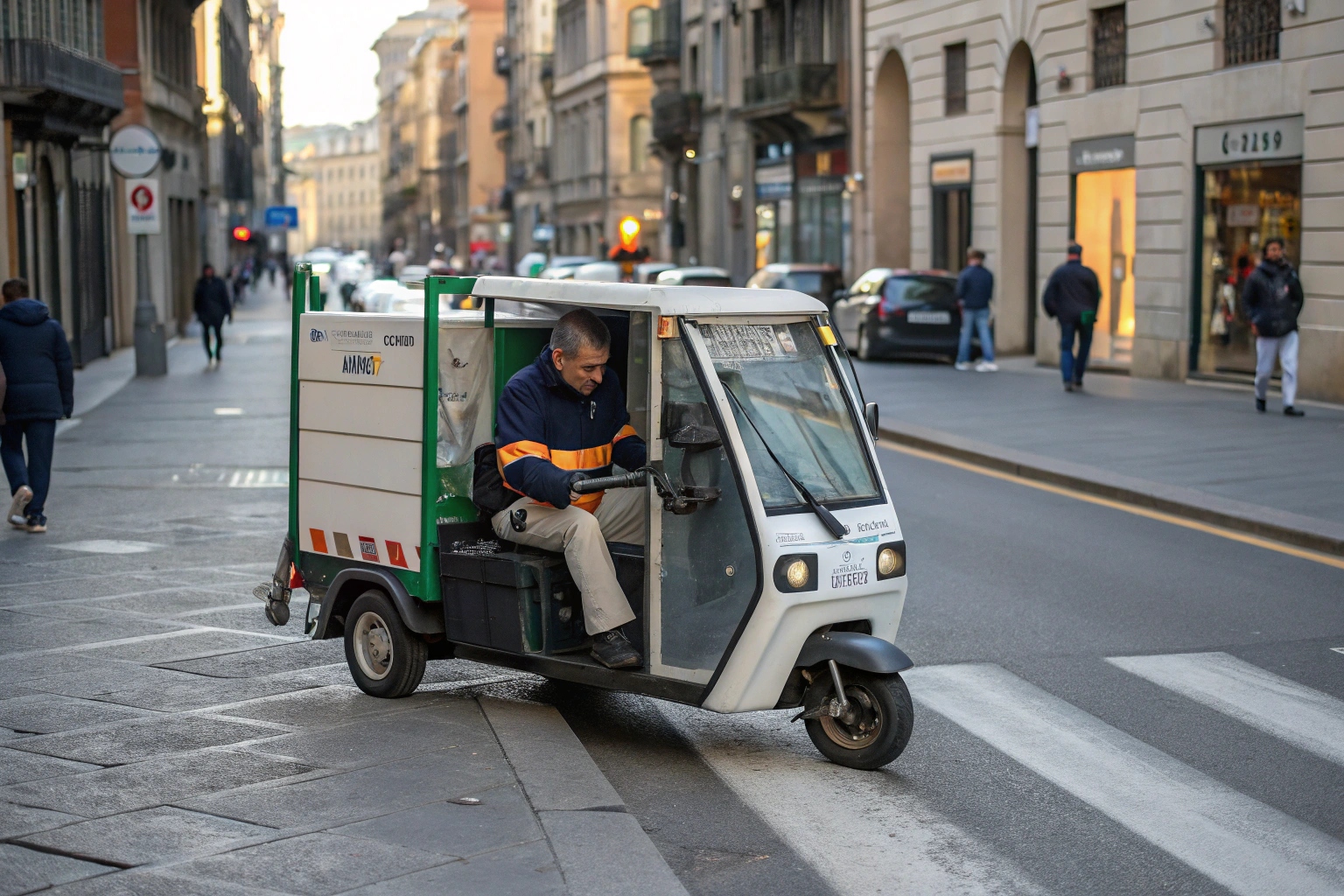
I've seen this exact problem firsthand with municipal clients around the world. They invest in expensive, large garbage trucks only to discover that large parts of their city—especially old town centers and dense neighborhoods—are simply unreachable. This is why we've focused so heavily on designing and producing specialized electric garbage tricycles. They aren't just smaller vehicles; they are a purpose-built solution to a very specific urban problem. Let's break down exactly why they work so well.
What Makes Electric Garbage Tricycles Ideal for Narrow and Crowded Streets?
Your cleaning crews struggle with bulky trucks in old city centers. They scrape walls, block pedestrian paths, and waste valuable time trying to navigate tight corners.
Electric garbage tricycles are perfectly suited for these spaces. Their three-wheel design gives them a much smaller turning radius than any four-wheel vehicle. They can easily mount curbs without damage and enter community paths sideways, reaching trash bins that trucks can never access.
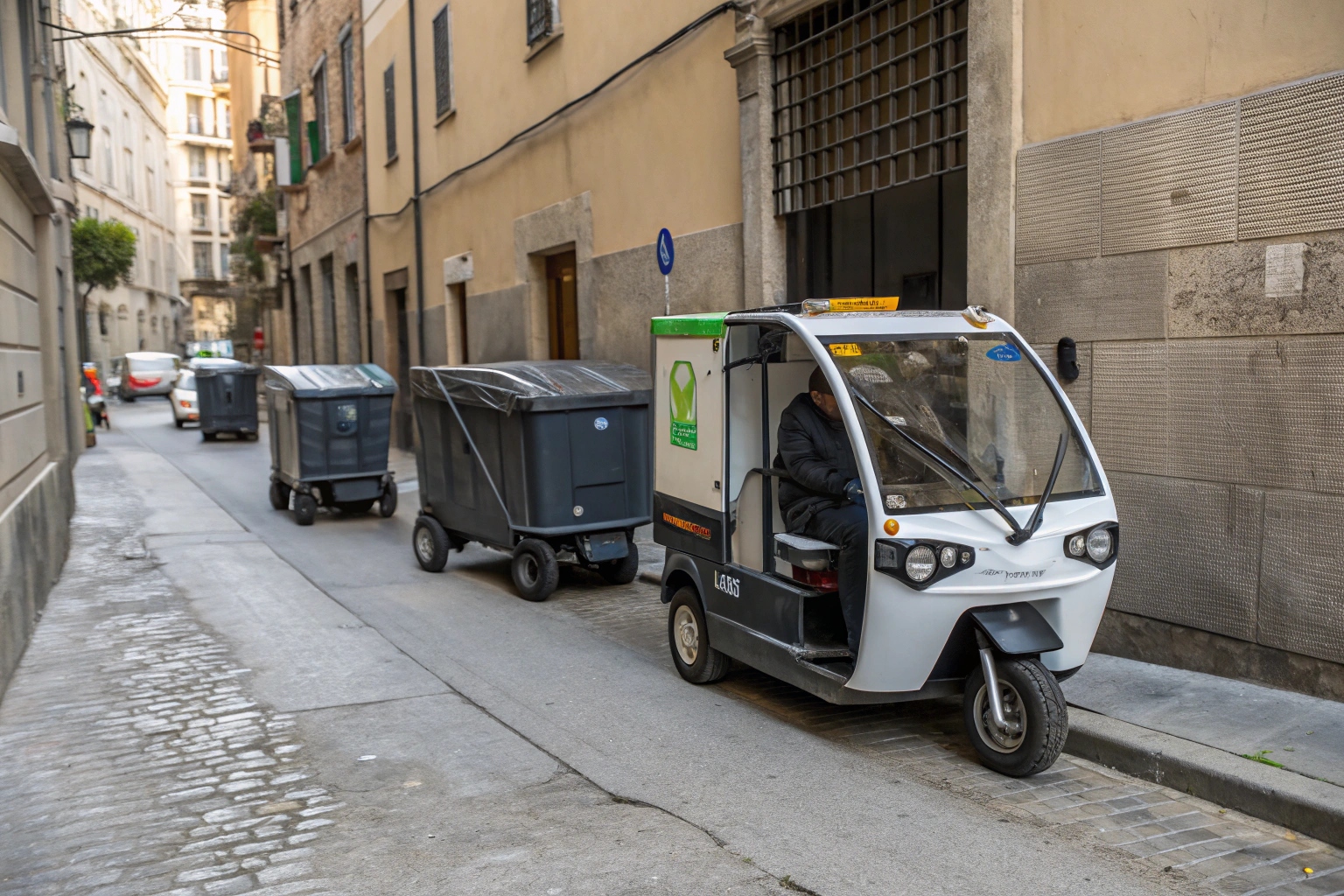
The superiority of these trikes in tight spaces comes down to simple physics and smart design. A three-wheel vehicle can pivot on its axis in a way a four-wheel vehicle never can. This lets your operators make sharp U-turns in narrow alleys instead of having to reverse all the way out. We also build them to be lightweight. This means they can drive over sidewalks and decorative paving stones without causing the cracks and damage that heavy trucks do. This flexibility is key. Your workers can drive along a community footpath, collecting trash from bins as they go, rather than parking on the street and hauling bins over long distances. It makes the entire process faster, quieter, and much more efficient for the operator.
How Do Electric Garbage Tricycles Compare to Small 4-Wheel Garbage Trucks?
You're deciding between a small garbage truck and an electric tricycle. The truck seems more powerful, but you worry it's overkill and won't fit everywhere you need it to go.
While small trucks hold more waste per trip, electric tricycles are far more cost-effective and maneuverable for high-frequency collection in dense urban areas. They excel at short-distance routes that trucks find inefficient, acting as the perfect "last-meter" collection tool.
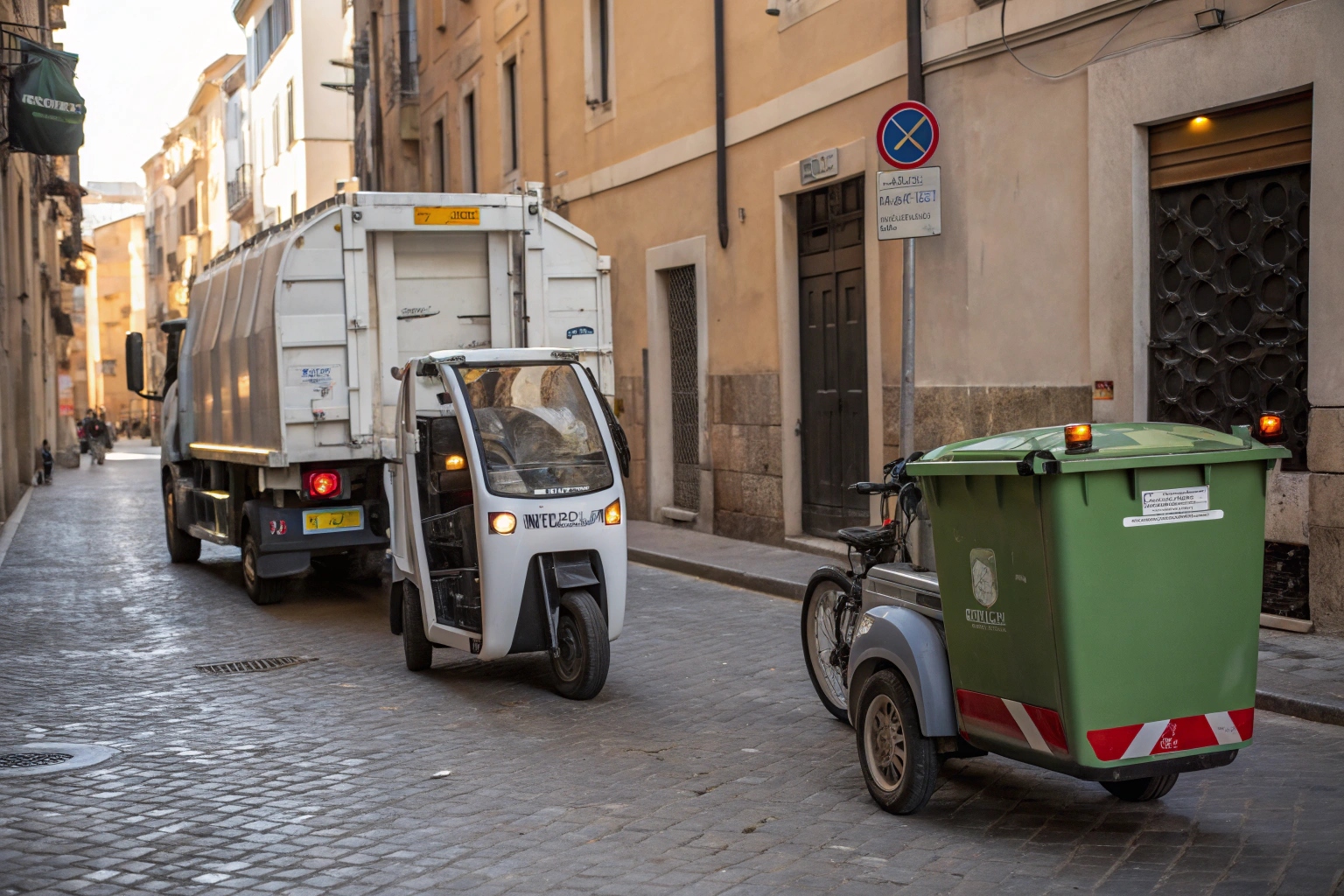
It's crucial to see these vehicles as having different jobs. One is not simply a replacement for the other. A small truck is for main routes, while a tricycle is for the capillary-like small streets that feed into those routes. Here’s a clear breakdown of their strengths:
| Comparison Point | Small Garbage Truck (3-5m³) | Electric Garbage Tricycle |
|---|---|---|
| Structure | 4 wheels, often with a small rear compressor. | 3 wheels, with an open or hydraulic tipping bin. |
| Street Access | Needs wider streets and a larger turning radius. | Easily enters narrow alleys, markets, and pedestrian zones. |
| Cost | High purchase price, complex engine maintenance. | Very low purchase price, extremely simple to maintain. |
| Application | Centralized collection from main points, daily transfer. | Neighborhoods, campuses, factories, dense communities. |
Electric garbage tricycles aren’t here to replace all garbage trucks. But they are absolutely unbeatable for the "last-50-meter" collection, getting the waste from the doorstep to a larger collection point efficiently.
What Design Features Make These Tricycles Suited for Municipal Use?
You need a vehicle that can withstand the tough, daily demands of waste collection. It needs to be more than just small; it needs to be durable and practical for your workers.
Key municipal features include a hydraulic tipping system for effortless unloading, a reinforced stainless steel cargo bed to resist corrosion from waste, and customizable battery configurations to match daily route distances perfectly.
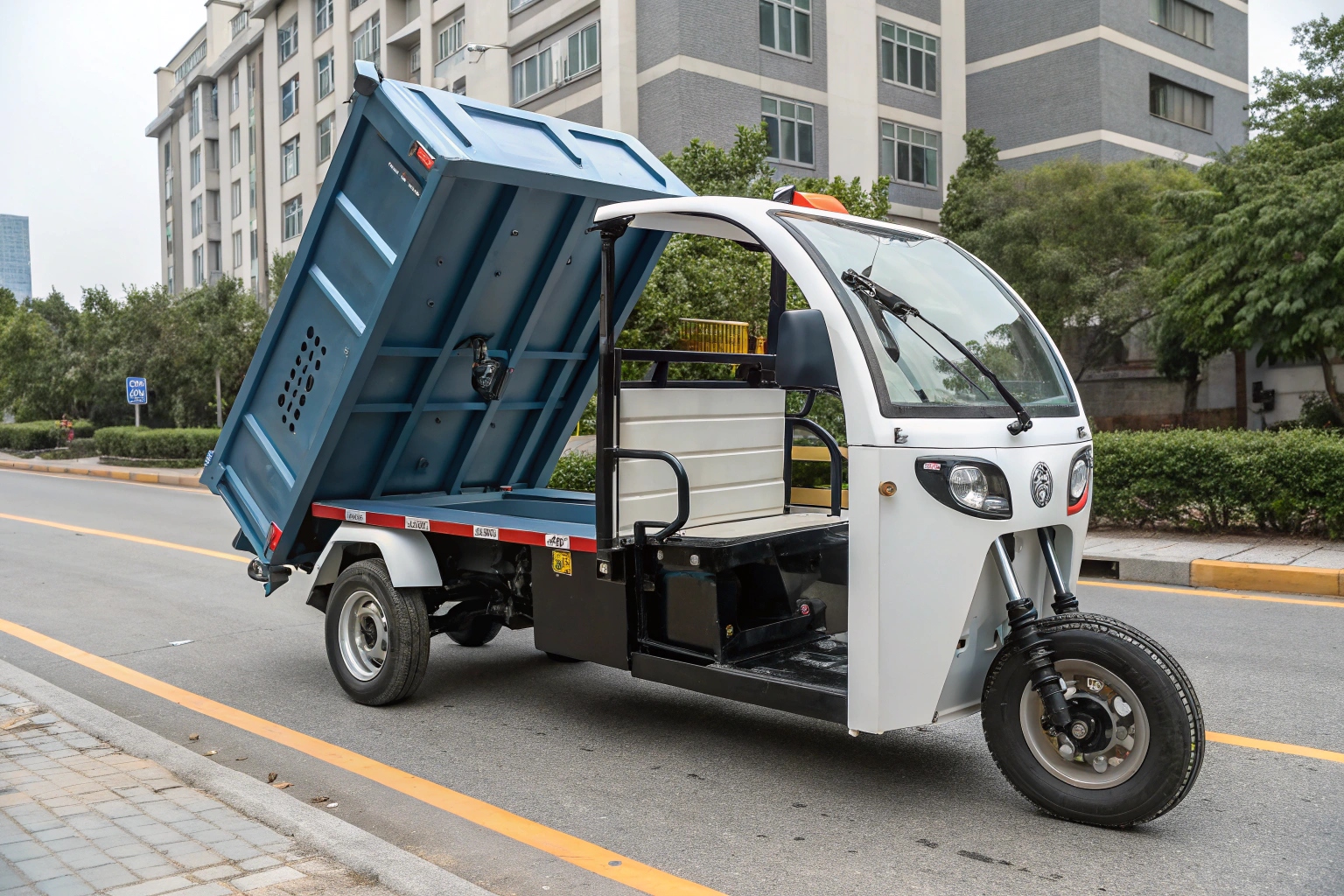
When we supply these tricycles for government projects or cleaning companies, we focus on features that deliver real-world value. First is the hydraulic tipping mechanism. This allows a single operator to unload a full bin of heavy waste with the push of a button, saving time and preventing worker injuries. Second, we insist on a stainless steel bin. Regular steel will quickly rust and corrode from wet waste and harsh cleaning chemicals. A stainless or properly treated steel bin lasts years longer. Finally, we work with the client on battery configuration. We can equip the tricycle with either lead-acid batteries for lower upfront cost or advanced lithium batteries for longer range and lifespan. This ensures the vehicle's range is perfectly matched to the length of its daily collection route, with no wasted capacity.
Who Can Benefit Most from Using Electric Garbage Tricycles?
You see the benefits, but are you the right type of buyer for this product? You want to be sure it's a wise investment for your specific operation.
The primary beneficiaries are municipal sanitation departments, private cleaning companies serving residential communities, and managers of large, closed environments like campuses, industrial parks, and tourist resorts where quiet, zero-emission operation is essential.
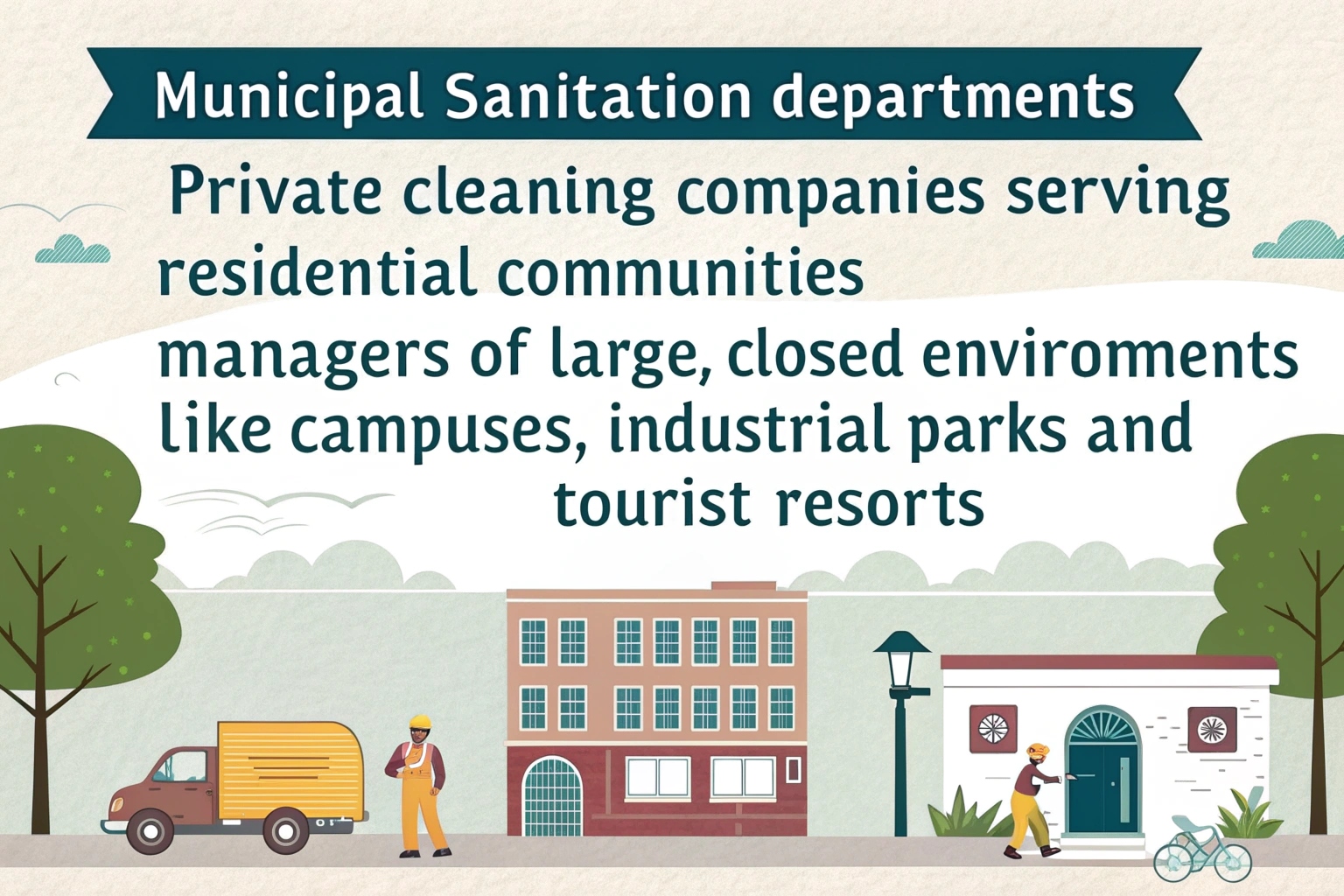
We see these vehicles being deployed successfully across several key sectors. Government and Municipal Sanitation Departments use them to dramatically improve service in dense urban cores and historic districts that their main fleet cannot cover. Private Cleaning Companies win more contracts by offering a more efficient and lower-cost service for residential compounds, apartment complexes, and business districts. Finally, Managers of Closed Environments** love them. For university campuses, large factories, airports, and tourist sites, the tricycle's quiet, fume-free operation is a huge advantage. It allows cleaning crews to operate at any time of day without disturbing students, workers, or visitors, maintaining a clean and peaceful environment. These buyers all share a common need: a targeted, efficient solution for waste collection in confined spaces.
Conclusion
For tight urban spaces, electric garbage tricycles are the most effective tool. They offer unmatched maneuverability and efficiency, ensuring no street or alley is left unserviced.

